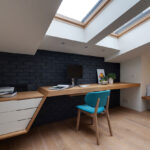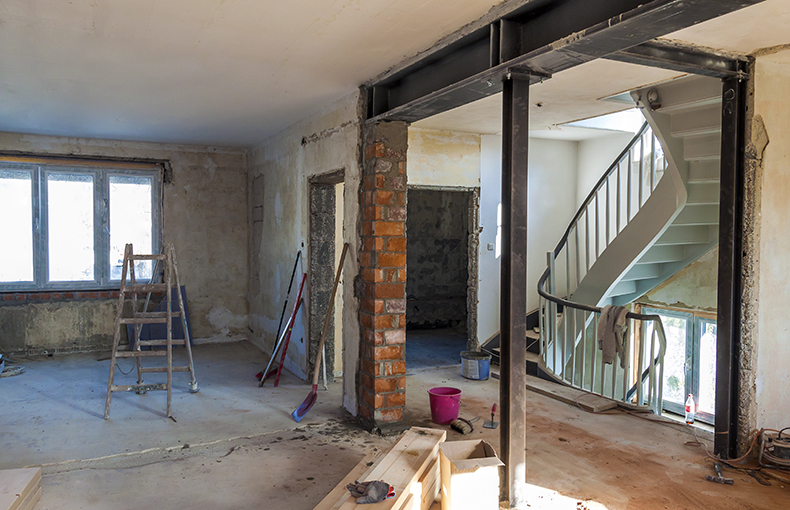Iconic Architectural Designs from Around the World & What We Can Learn from Them
Table of Contents
- Introduction
- The Parthenon, Athens, Greece
- Fallingwater, Pennsylvania, USA
- The Sydney Opera House, Australia
- The Forbidden City, Beijing, China
- The Sagrada Família, Barcelona, Spain
- The Lotus Temple, New Delhi, India
- The Louvre Pyramid, Paris, France
- The Burj Khalifa, Dubai, UAE
- The Guggenheim Museum, New York, USA
- The Masdar Institute, Abu Dhabi, UAE
- What These Designs Have in Common
- How Hothico Architects Integrates These Learnings
- Final Thoughts
Architecture is not just about buildings. It’s about the way spaces make us feel, function, and connect with our environment. Across the globe, certain architectural designs have stood out—not only for their physical forms but for the ideas they represent. These buildings tell stories, solve problems, and inspire new ways of thinking.
In this blog post, we’ll explore some of the most iconic architectural designs from around the world, and more importantly, look at what lessons we can draw from them. Whether you’re an architect, a designer, or someone interested in how our built environment shapes us, there’s something here to take away.
As a firm rooted in purpose-driven design, Hothico Architects often studies these global examples to shape better, smarter spaces for their clients—balancing aesthetics, function, sustainability, and context.
The Parthenon, Athens, Greece
What it is:
The Parthenon is a temple built in ancient Greece on the Athenian Acropolis. It was completed in 438 BCE and is one of the earliest examples of architectural symmetry and proportion.
What we can learn:
The Parthenon shows how mathematical ratios can influence the perception of balance and harmony in a structure. It also teaches the value of durability—built over 2,000 years ago, it still stands as a reference for classical design.
Takeaway for modern design:
Precision in layout and planning has a lasting impact. At Hothico Architects, this principle is reflected in how every design, no matter how modern, considers proportion and layout carefully to create harmony within the space.
Fallingwater, Pennsylvania, USA
What it is:
Designed by Frank Lloyd Wright in 1935, Fallingwater is a house built partially over a waterfall. The house blends into its natural surroundings and uses local materials to connect the structure to the landscape.
What we can learn:
Fallingwater reminds us that buildings don’t have to dominate nature—they can live within it. Wright didn’t try to alter the landscape; he embraced it.
Takeaway for modern design:
Site context matters. Hothico Architects believes that the best buildings grow out of their environment, not in spite of it. Every project considers topography, light, climate, and vegetation to make the most of what nature already offers.
The Sydney Opera House, Australia
What it is:
Completed in 1973, the Sydney Opera House is known for its shell-like roof design. It broke away from traditional building forms and became a cultural icon of Australia.
What we can learn:
This structure shows how bold ideas, even if unconventional, can become symbols of identity. Its design faced criticism and engineering challenges, but perseverance led to a globally recognized landmark.
Takeaway for modern design:
Innovation doesn’t always come easy, but it matters. At Hothico Architects, unconventional ideas are not rejected outright—they’re explored, tested, and refined, especially when they have the potential to bring meaning or cultural significance to a place.
The Forbidden City, Beijing, China
What it is:
This massive palace complex, built in the 15th century, reflects the power and hierarchy of the Ming and Qing dynasties. It’s a carefully ordered arrangement of courtyards, halls, and gates.
What we can learn:
Architecture can communicate social structure. The spatial hierarchy within the Forbidden City was used to reinforce order, respect, and authority.
Takeaway for modern design:
Spaces can guide behavior. Whether designing an office, school, or residence, Hothico Architects pays close attention to how spatial arrangements influence human interaction, privacy, and movement.
The Sagrada Família, Barcelona, Spain
What it is:
Started in 1882 and still under construction, Antoni Gaudí’s Sagrada Família is a basilica with deeply intricate facades and columns designed to mimic natural forms like trees.
What we can learn:
Patience and vision go a long way. This project spans centuries because of its complexity and ambition. Gaudí believed in craftsmanship and wasn’t afraid to let his ideas evolve over time.
Takeaway for modern design:
Not all good design is quick. Sometimes the process matters as much as the product. Hothico Architects adopts a flexible, iterative process that welcomes input, change, and thoughtful revisions along the way.
The Lotus Temple, New Delhi, India
What it is:
Completed in 1986, the Lotus Temple is a Bahá’í House of Worship shaped like a blooming lotus. It’s a space open to people of all religions.
What we can learn:
Simplicity can be powerful. Without any ornamentation or symbols, the building uses form alone to evoke meaning and attract people.
Takeaway for modern design:
Minimalism is not about less—it’s about clarity. In many of its projects, Hothico Architects focuses on simplicity not as a style, but as a way to enhance usability, accessibility, and clarity of form.
The Louvre Pyramid, Paris, France
What it is:
Designed by I.M. Pei and completed in 1989, this glass pyramid sits in the courtyard of the historic Louvre Museum. It was a bold insertion of modern geometry in a classical setting.
What we can learn:
Contrast can work beautifully. Combining old and new creates a dialogue that enriches both.
Takeaway for modern design:
Mixing styles can be risky, but rewarding. At Hothico Architects, contemporary interventions in heritage sites or traditional neighborhoods are handled with care—always aiming to highlight the value of both eras rather than favoring one over the other.
The Burj Khalifa, Dubai, UAE
What it is:
The tallest building in the world, standing at over 828 meters, the Burj Khalifa was completed in 2010. It uses a “Y” shaped floor plan for stability and aesthetics.
What we can learn:
Engineering and design go hand in hand. The structure’s success isn’t just in height, but in how it manages wind, weight, and space efficiently.
Takeaway for modern design:
Good design always works with engineering, not against it. Hothico Architects ensures that its designs aren’t just beautiful—they’re also practical, safe, and structurally sound.
The Guggenheim Museum, New York, USA
What it is:
Opened in 1959 and designed by Frank Lloyd Wright, the Guggenheim flips the idea of a traditional museum. Its spiral ramp layout changes how people view art as they move.
What we can learn:
User experience is essential. The form of the building is shaped by the journey it offers, not just by how it looks from outside.
Takeaway for modern design:
Design is not just about form—it’s about how people experience the space. From museums to homes, Hothico Architects focuses on how a space works from a user’s perspective, not just from the drawing board.
The Masdar Institute, Abu Dhabi, UAE
What it is:
Part of Masdar City—a planned eco-city—the Masdar Institute is built with sustainability in mind, using passive cooling, solar panels, and local materials.
What we can learn:
Design plays a major role in energy efficiency. This building doesn’t rely heavily on mechanical systems—it’s built to work with the environment.
Takeaway for modern design:
Sustainability begins at the design stage. Hothico Architects takes climate, orientation, and material sourcing seriously, ensuring every building reduces energy consumption and supports long-term environmental health.
What These Designs Have in Common
Though the examples come from different continents, cultures, and centuries, they share common values:
Purposeful form: Every design serves more than one function—be it symbolic, cultural, or environmental.
Contextual awareness: These buildings respond to their surroundings—be it nature, history, or society.
Design as a story: Each structure tells a story, whether about its people, its purpose, or its process.
How Hothico Architects Integrates These Learnings
At Hothico Architects, the goal is not to copy these famous buildings but to learn from the thinking behind them. Here’s how these lessons are applied in real-world projects:
1. Context-First Design
Every site has a story. Hothico begins by listening—to the client, the environment, and the surrounding community. This results in buildings that belong where they are.
2. Blending Technology with Tradition
Modern tools are used to create efficient structures, but not at the cost of cultural identity. When working in places like Punjab, for example, local architecture is referenced to keep the design grounded.
3. Client-Centric Process
Like how the Guggenheim puts the visitor journey first, Hothico prioritizes the user—whether it’s a family, a team of employees, or a hospital full of patients. Layouts, flows, and features are designed around real human needs.
4. Sustainability by Design
Rather than relying on add-ons like solar panels as an afterthought, energy-saving principles are integrated from the start—through orientation, insulation, natural ventilation, and choice of materials.
Final Thoughts
Great architecture is not just about how a building looks. It’s about how it works, how it lasts, how it fits in, and how it makes people feel. The best designs across the world teach us that thoughtful design is timeless. Whether it’s a 2,000-year-old temple or a futuristic city hub, the goal is always the same: create spaces that support life.
At Hothico Architects, global inspiration meets local knowledge to build structures that do more than stand tall—they stand for something. Every project is an opportunity to create not just a building, but a legacy.












